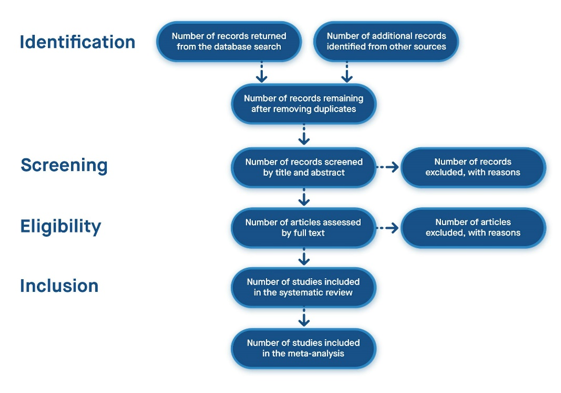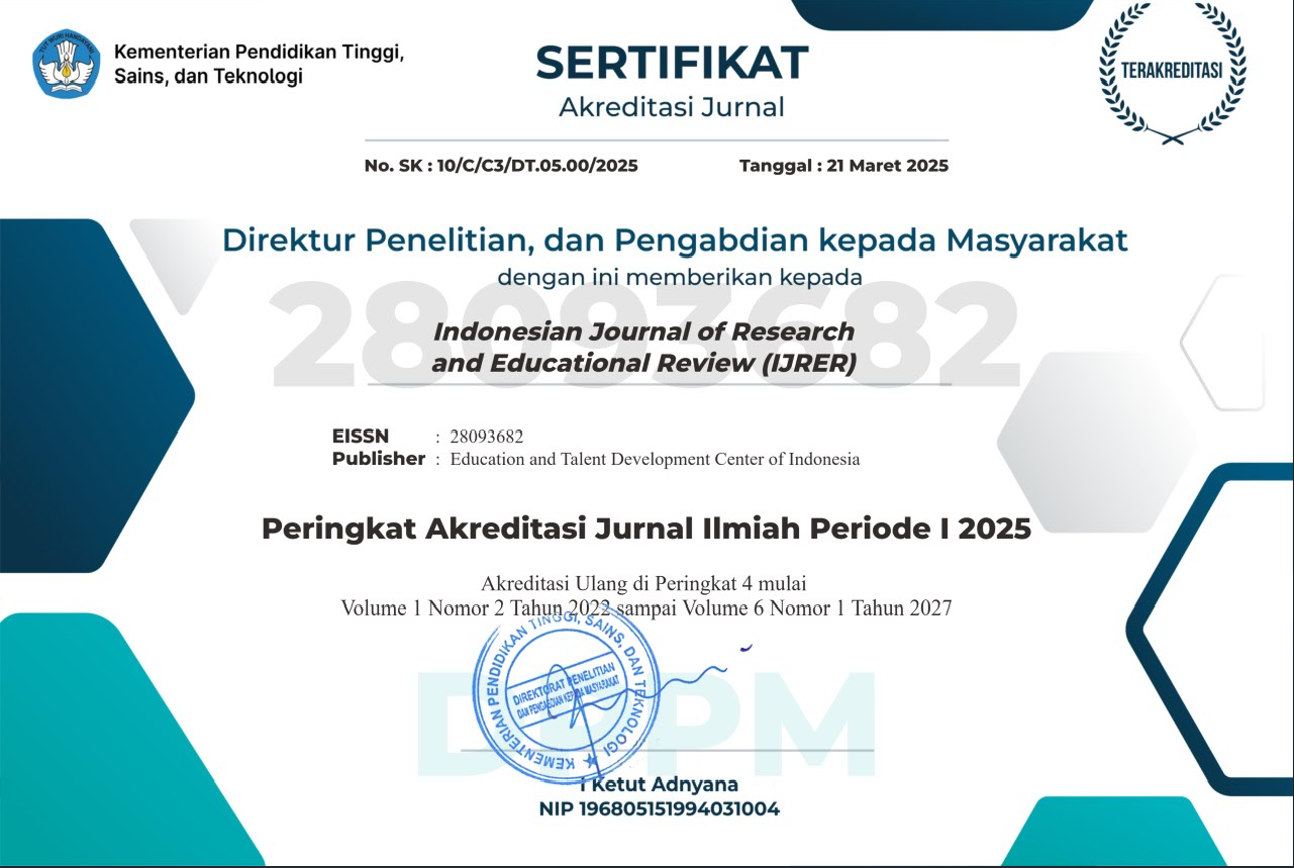Effective Strategies for Listening Comprehension: A Focus on Asia
DOI:
https://doi.org/10.51574/ijrer.v4i4.3047Keywords:
Listening Comprehension, Listening Strategy, Systematic Literature Review, Teaching StrategyAbstract
Listening, once perceived as the least important language skill, has gained increasing attention recently, as shown by the growing number of studies in the field. However, research on listening comprehension strategies remains limited. This study reviews the most frequently used teaching and learning strategies in Asian classrooms to enhance listening comprehension and identify research gaps for future exploration. A systematic literature review was conducted on studies published between 2021 and 2025 across eight Asian countries: China, Iran, Indonesia, Taiwan, Thailand, Turkey, Saudi Arabia, and South Korea. Findings reveal that the most common teaching strategy is the use of regular and repetitive listening activities, while metacognitive strategies emerge as the most frequently practiced learning approach. Moreover, the review highlights a notable imbalance between the number of strategies examined under learning strategies versus teaching strategies. These results emphasize the need for further research across Asia, particularly studies that design and test innovative strategies aligned with the growing demand for technology-driven and digitally enhanced language instruction.
References
Abed, A., Rahimi, M., & Zareian, G. (2022). The role of active listening in developing EFL learners’ comprehension skills. Journal of Language and Education Studies, 14(3), 233–245. https://doi.org/10.36783/jles.2022143.233
Al-Khresheh, M. H., & Alruwaili, S. F. (2024). Metacognition in listening comprehension: Analyzing strategies and gender differences among Saudi EFL university students. Cogent Education, 11(1), Article 2291954. https://doi.org/10.1080/23311886.2023.2291954
Aslanoğlu, A. E. (2021). Effective variables that predict 5th-grade Turkish students’ success in listening comprehension of the Turkish language. International Journal of Curriculum and Instruction, 13(3), 3478–3494. https://eric.ed.gov/?id=EJ1312774
Bi, N. Z., & Wang, Y. (2025). Effects of metacognitive interventions on listening comprehension performance: A meta-analysis. Acta Psychologica, 242, 103121. https://doi.org/10.1016/j.actpsy.2024.104623
Bozorgian, H., Sabokpa, M., & Muhammadpour, M. (2022). Dialogic interaction and dynamic systems theory in listening comprehension: A case study. SAGE Open, 12(3), 1–11. https://doi.org/10.1177/21582440251328768
Chang, A., Millett, S., & Renandya, W. A. (2019). Developing listening fluency through supported extensive listening practice. RELC Journal, 50(3), 422-438. https://doi.org/10.1177/0033688217751468
Chitprarop, A. (2024). Cultivating linguistic listening: Unpacking EFL accounting undergraduates’ challenges and empowering strategies with mobile-assisted language learning. rEFLections, 31(1), 235–254. https://eric.ed.gov/?id=EJ1426685
Chou, M. H. (2017). A task-based language teaching approach to developing metacognitive strategies for listening comprehension. International Journal of Listening, 31(1), 51-70. https://doi.org/10.1080/10904018.2015.1098542
Deregözü, A. (2021). The use of listening comprehension strategies in distance language education. English Language Teaching, 14(10), 62–69. https://eric.ed.gov/?id=EJ1318437
Dillon, H., & Cameron, S. (2021). Separating the causes of listening difficulties in children. Ear and hearing, 42(5), 1097-1108. https://doi.org/10.1097/AUD.0000000000001069
Fu, C. (2021). Application of cohesion theory in CET-4 listening comprehension. English Language Teaching, 14(12), 18–22. https://eric.ed.gov/?id=EJ1324219
Fung, D., & Macaro, E. (2021). Exploring the relationship between linguistic knowledge and strategy use in listening comprehension. Language Teaching Research, 25(4), 540-564. https://doi.org/10.1177/1362168819868879
Hocaoğlu, N., & Ocak, G. (2024). The effect of listening strategies on the listening and speaking skills and listening motivation. Problems of Education in the 21st Century, 82(6), 818–836. https://doi.org/10.33225/pec/24.82.818
Institute of Education Sciences. (2025). Education Resources Information Center (ERIC). https://eric.ed.gov/
Irgin, P. (2025). Note-taking in academic listening: A translanguaging perspective. RELC Journal. https://doi.org/10.1177/00336882251322253
Ismail, N. S. C., & Aziz, A. A. (2020). The teaching of listening strategies in ESL classrooms. International Journal of Academic Research in Business and Social Sciences, 10(6), 197–209. https://doi.org/10.6007/IJARBSS/v10-i6/7279
Jia, C., & Hew, K. F. (2021). Toward a set of design principles for decoding training: A systematic review of studies of English as a foreign/second language listening education. Educational Research Review, 33, 100392. https://doi.org/10.1016/j.edurev.2021.100392
Jiang, H. (2025). Effects of peer-assisted listening training on learners’ listening performance and listening anxiety. Asia Pacific Education Review. Advance online publication. https://doi.org/10.1016/j.sasc.2025.200210
Jiang, D., Kalyuga, S., & Sweller, J. (2018). The curious case of improving foreign language listening skills by reading rather than listening: An expertise reversal effect. Educational Psychology Review, 30(3), 1139-1165. https://doi.org/10.1007/s10648-017-9427-1
Jung, H. (2024). Enhancing L2 listening proficiency and metacognitive awareness through self-annotation in high school EFL. English Teaching, 79(3), 31–59. https://doi.org/10.15858/engtea.79.3.202409.31
Kök, İ. (2023). Investigating learners’ listening comprehension strategy awareness and its implications for language learning. Language Teaching Research Quarterly, 33(1), 132–149. https://doi.org/10.32038/ltrq.2023.33.07
Kurudayıoğlu, M., Yazıcı, E., & Göktentürk, T. (2021). Turkish teacher candidates’ self-efficacies to use listening strategies scale: A validity and reliability study. SAGE Open, 11(3). https://doi.org/10.1177/21582440211023174
Kwon, S. K., & Yu, G. (2024). The effect of viewing visual cues in a listening comprehension test on second language learners’ test-taking process and performance: An eye-tracking study. Language Testing. Advance online publication. https://doi.org/10.1177/02655322241239356
Kwon, Y., & Yu, H. (2024). The effectiveness of video-mediated tests for listening comprehension assessment. Language Testing Asia, 14(1), 25–41.
Lo, C.-C., Wen, H., & Lin, Y.-S. (2021). The effect of readers theater on EFL seventh-graders’ reading and listening comprehension. SAGE Open, 11(4). https://doi.org/10.1177/21582440211038388
Meltzer, L., Greschler, M. A., Davis, K., & Vanderberg, C. (2021). Executive function, metacognition, and language: Promoting student success with explicit strategy instruction. Perspectives of the ASHA Special Interest Groups, 6(6), 1343-1356. https://doi.org/10.1044/2021_PERSP-21-000
Naijland. (2024). Is ScienceDirect legit? ScienceDirect honest reviews. Naijland. https://naijland.com/is-sciencedirect-legit-science-direct-reviews/
Nazarieh, M., Razmi, M. H., Azizian, M., & Ghani, M. U. (2022). A brief history of listening comprehension in second language teaching and learning. Education Research International, 2022(1), 3894457. https://doi.org/10.1155/2022/3894457
Polatcan, F., Bicxer, N., & Er, O. (2025). Metacognitive listening strategies and critical listening attitudes as predictors of teacher candidates’ academic listening skills: A structural equation modeling analysis. SAGE Open, 15(1). https://doi.org/10.1177/21582440251328768
Riffe, D., Lacy, S., Watson, B. R., & Lovejoy, J. (2023). Analyzing media messages: Using quantitative content analysis in research. Routledge.
Robillos, R. J., & Bustos, I. G. (2022). Learners’ listening skills and metacognitive awareness through metacognitive strategy instruction with pedagogical cycle. International Journal of Instruction, 15(3), 393–412. https://doi.org/10.29333/iji.2022.15322a
Shaojie, Z., Lin, M., & Tang, Y. (2024). Enhancing listening through mobile-assisted tools in Chinese classrooms. Journal of Mobile Learning and Education, 9(2), 114–129.
Shahani, S., Chalak, A., & Tabrizi, H. H. (2022). Impact of critical thinking instruction through flipped teaching on Iranian EFL learners’ listening comprehension. Turkish Online Journal of Distance Education, 23(2), 236–251. https://doi.org/10.17718/tojde.1096565
Tan, S., Wu, Y., & Zhang, H. (2024). The influence of meta-cognitive listening strategies on listening performance in the MALL: The mediation effect of learning style and self-efficacy. SAGE Open, 14(2). https://doi.org/10.1177/21582440241249354
Taylor & Francis. (2025). Publishing ethics and research integrity. https://taylorandfrancis.com/about/corporate-responsibility/publishing-ethics-and-research-integrity/
Temur, M. (2021). The impact of awakening perception of learners’ comprehension on English learning via regularly listening to songs in English. International Journal of Progressive Education, 17(1), 145–157.
Wandah, P. N., Fadillah, J., Firzaly, Z. A., & Asri, S. (2024). Analyzing students’ learning styles in listening comprehension. Journal of English Teaching, 10(3), 292–306.
Wang, H.-C., & Hsiao, C.-H. (2022). Effects of advanced organizers on Taiwanese middle school students’ English-video listening comprehension. Taiwan Journal of TESOL, 19(2), 107–144.
Yeldham, M. (2016). Second language listening instruction: Comparing a strategies‐based approach with an interactive, strategies/bottom‐up skills approach. Tesol Quarterly, 50(2), 394-420. https://doi.org/10.1002/tesq.233
Zhang, P. (2022). How does repetition affect vocabulary learning through listening to the teacher’s explicit instruction? The moderating role of listening proficiency and preexisting vocabulary knowledge. Language Teaching Research, 27(6), 922–944. https://doi.org/10.1177/13621688221140521
Zhang, Y. (2022). The value of regular listening practice in EFL environments. Modern English Education, 24(1), 39–55.
Zhou, S., Wu, X., Tang, Y., & Wang, W. (2025). To survive or to thrive? Synthesizing the narrative trajectories of students’ self-regulated listening practice in an EMI transnational higher education context. Language and Education, 39(2), 141–157. https://doi.org/10.1080/09500782.2023.2260358

Downloads
Published
How to Cite
Issue
Section
License
Copyright (c) 2025 Jonalyn B. Calis, Rebecca D. Ngolab, Sherilyn B. Pablo, Angel Faith B. Saysayap, John Rey O. Pelila

This work is licensed under a Creative Commons Attribution-ShareAlike 4.0 International License.









1.png)













